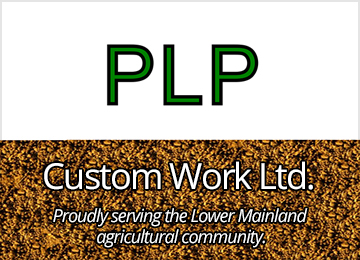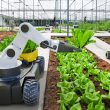Balance of Inputs Creates Flavourful Outputs
Ronda Payne
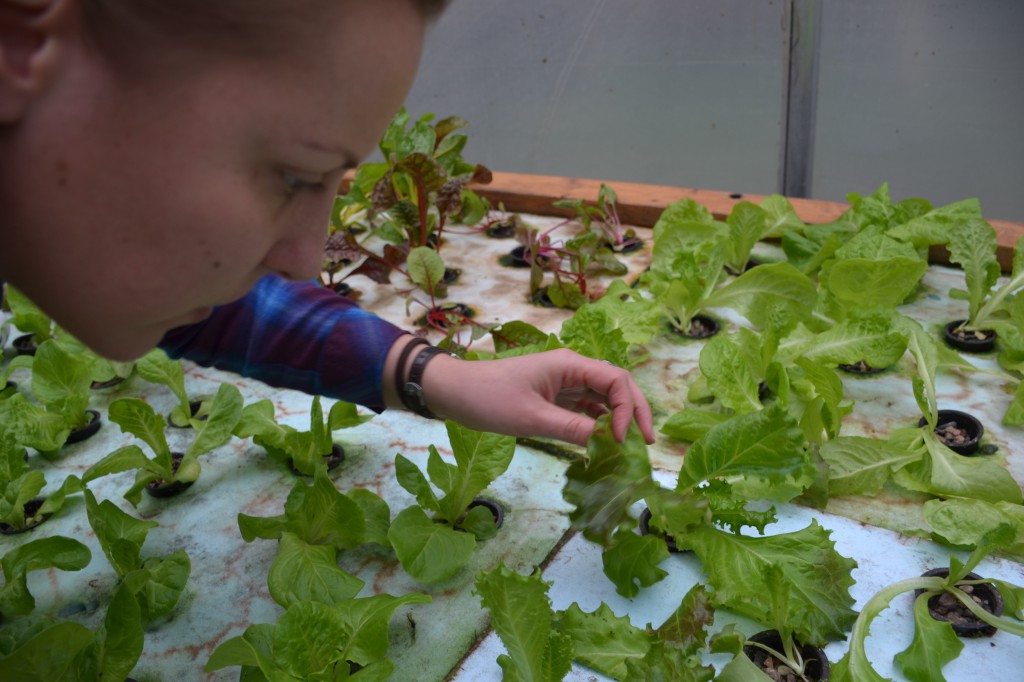
Mother Nature really does grow the best tasting food, but how does she do it? Some would say it’s best to leave well enough alone, but others challenge that notion and set out to mimic Mother Nature’s tasty work. It’s something Stephanie Hooker and Scott Rennick, owners of You Grow Food Aquaponics, began five years ago.
The couple set up an aquaponics facility in their garage before expanding to the greenhouse they lease in Hope, BC. Together with their small team, they work together to create food in the most Mother Naturedly way possible.
You Grow Food’s 2,800 square foot, year-round greenhouse grows primarily leafy greens and culinary herbs with the help of two main inputs. One is tilapia, specifically the blue Nile and white Mozambique varieties, which are chosen because they are available in Canada. The other input of the operation is integrated pest management (IPM) techniques to control pests.
But wait, you say, isn’t water another of the inputs in an aquaponics facility? Surprisingly, there is very little water required—only topping up due to evaporation has been necessary since the business began, which makes the facility 95% more water efficient than any other form of farming according to Hooker.
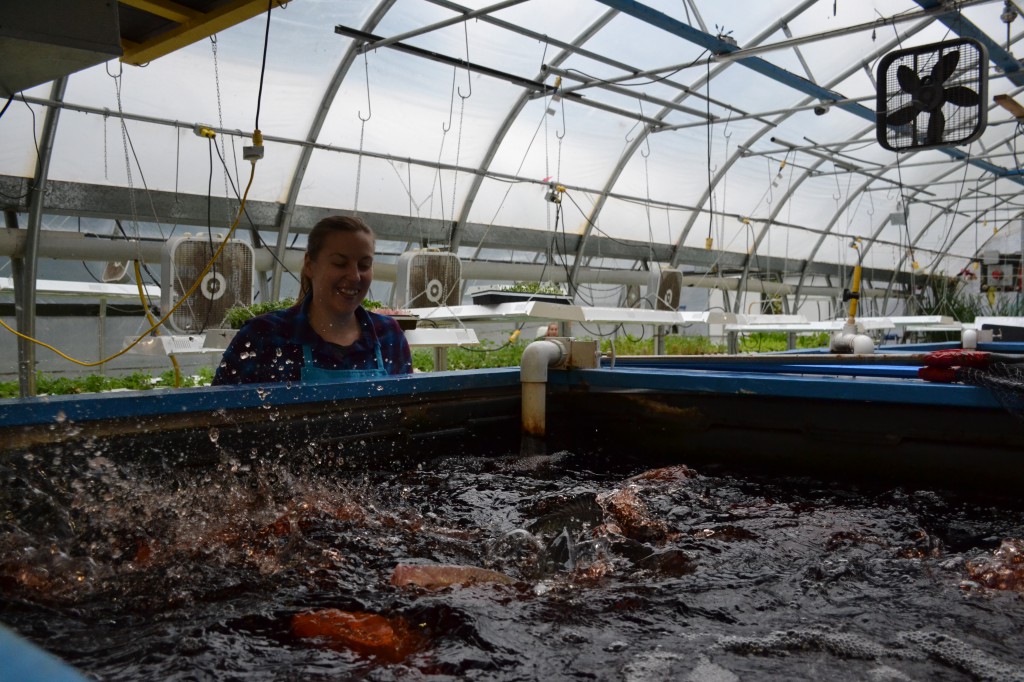
One input that’s purposely absent is chemicals, because as Hooker explains, that would kill the fish. The tilapia power the system. Their waste provides nutrients to the plants.
The couple purchases tilapia from a licensed brooding facility when they are a little more than a centimeter long. As Hooker explains, these little guys get the best feed possible (more nutrient dense for the fingerlings) in order to grow and because about half of the food they eat turns to waste to feed the plants.
“We chose tilapia for several reasons,” she notes. “They like a pond-style system, they like to be in tanks. We’re not forcing them into habitat they aren’t familiar with. They are pretty disease resistant and pretty easy to raise.”
Tilapia are school fish that like being densely stocked and have the same warm water temperature, oxygen level and water chemistry requirements as the plants, according to Hooker. She says the fish can live their whole lives in You Grow Food Aquaponics’ mechanical wetland and be very happy and healthy.
She describes the greenhouse as small compared to other commercial aquaponic operations and says, “We can only feed the fish what the beneficial bacteria can translate into plant food so the plants can filter the water. As a result, our fish growth rate is slower than a conventional fish farm because we have to regulate our feed rates to be in balance with the rest of the ecosystem. If we had more plant growth space, we could increase our feed rates and the fish would grow faster.”
The site’s three, six-foot deep tanks retain about 3,000 litres of water each. Tanks can hold upwards of 1,000 of the baby fish and about 150 when they are at their largest size of five pounds.
At maturity, the fish stock are sold fresh (in an ice-slurry) to local restauranteurs or to those on the veggie subscription program who make a request. These fish, while sold as an off-shoot product, are essential to the aquaponics system and, as Hooker says, because they are raised in a healthy ecosystem, they are delicious.
“The fish are the nutrient engine that runs the system,” she notes. “They are good poopers… they provide a lot of nutrients. It took me three years to figure out that we were fish farmers.”
Early into the greenhouse setup, Rennick, who is primarily involved in the fish rearing side of the business, found the fish were nervous and a lot of algae growth had formed in the tanks.
The sunlight streaming in the greenhouse was causing two problems—an increase in algae growth and nervous fish. It took research to find a solution in red-hued organic chelated dye. It tinted the water and prevented the algae.
“The Nile is muddier than the Fraser,” Hooker notes. “These guys like to hide in dark water.”
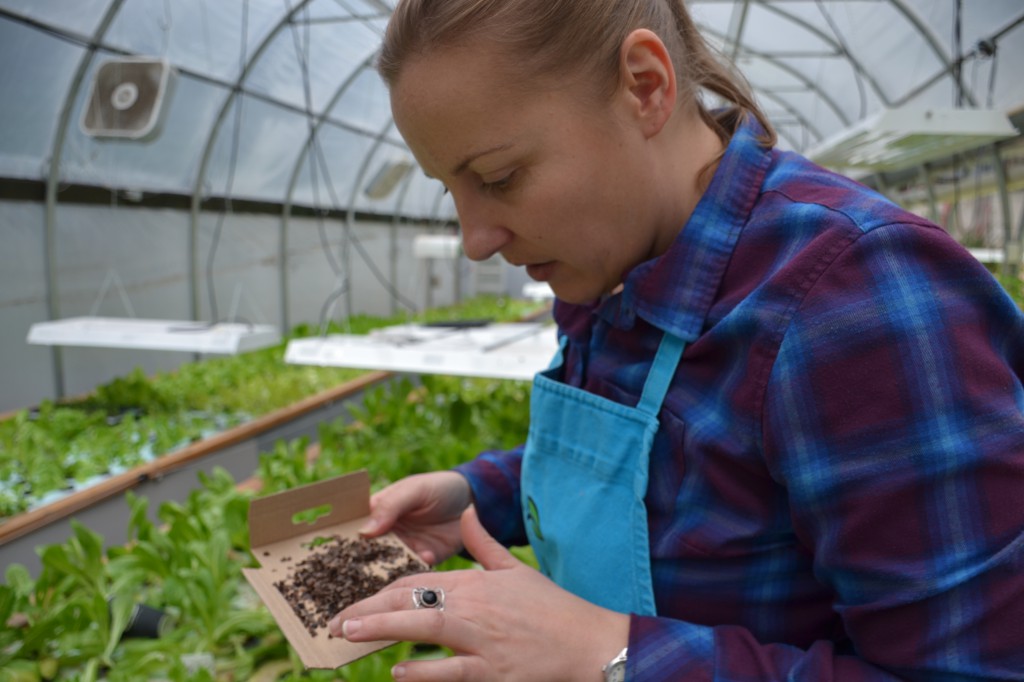
IPM is another essential input of the operation because the fish demand it.
“We can’t spray anything on our crops that could affect our fish,” she says. “This includes OMRI-certified products and insecticidal soap. The fish have absolutely forced us to commit to an IPM approach. We can’t do anything that would damage the fish, plants or bacteria, so we use natural products only found in nature.”
Some of this includes mineral additives or oyster shells. The additions are beneficial to the plants yet won’t harm the fish in the ever-circulating system. The other aspect is inviting Mother Nature’s balance of predator and prey when it comes to insects.
“Instead of being sterile, we want to invite biodiversity,” notes Hooker. “We have come to realize that resilient wetlands are the ones with the most biodiversity. So we apply a biodiversity philosophy to both our water and our greenhouse environment. In the water we have fish, snails, beneficial bacteria, arthropods, amphipods, and red wrigglers that function as a community of critters to translate waste into plant food and prevent pathogens from getting into the system. In the greenhouse environment we have to introduce a biodiversity of insects so that pest insects like aphids, thrips, and spider mites do not gain a foothold.”
Even frogs take up residence year-round in the greenhouse. They hang out in the crops, eat insects and sing to anyone who is there to listen. These are Hooker’s favorite beneficials.
Aphids are by far one of her biggest annoyances. Instead of getting worked up about the pests, she offers a sacrifice of barley grass for the grass aphids. This keeps enough aphids around—though not on her saleable crops—so that the beneficial aphidoletes will stick around.
“We get beneficial insects delivered to us. In the summer they’re active, they breed more,” Hooker notes. “We might not order bugs in the summer. We order about two times a month in the winter. Aphids and thrips can survive anything. In the winter their natural predators are dormant so we have to purchase predators.”
Hooker orders different insects depending upon greenhouse temperature, hours of daylight and habitat cycle, but wherever possible they invite beneficial insects into the greenhouse.
“We also create ‘love shacks’ for the aphidoletes which are cardboard tubes with a bit of damp cocoa coir inside,” she says. “This is because they like a humid place with some fibres (cardboard fibres in this case) to hang from in order to breed. We are still learning how to do IPM effectively but every year we get a little better.”
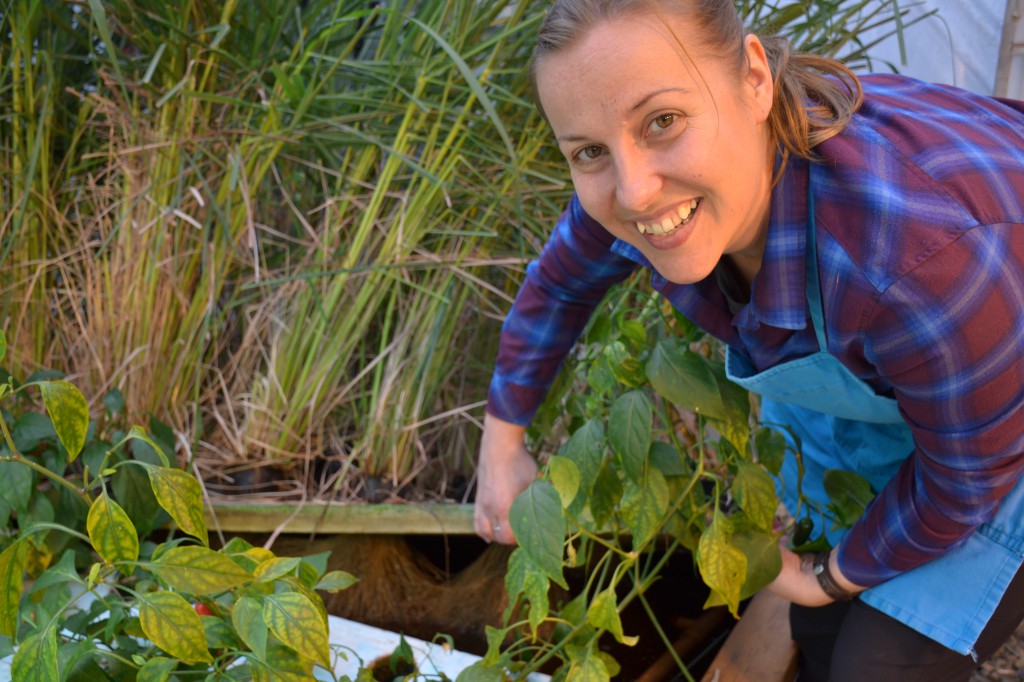
You Grow Good Aquaponics also has a new relationship with the University of the Fraser Valley.
“The learning and research potential on even small-scale systems is very high,” notes Hooker. “Ecology is about recognizing that there are so many incredible processes in nature that we just don’t fully understand yet, and then try and figure them out. When we can better understand these natural systems, we can imitate them for better productivity.”
As she explains, ecosystem management is a year-round job and is a good opportunity for students.
“We have installed small aquaponic systems in a handful of schools and we enjoy seeing aquaponics clubs form around them,” she adds. “Our latest aquaponics learning garden has just been installed at the UFV Chilliwack Campus in their research greenhouse. This system was customized for some goals of UFV.”
The aquaponics set up at UFV will be the responsibility of the Agriculture department and may also include involvement from Culinary Arts, Biology, and Sustainable Tourism departments.
With food consumption going up and challenges in farming keeping pace with that increase, aquaponics may be just what’s needed to keep Mother Nature’s plan in action.


